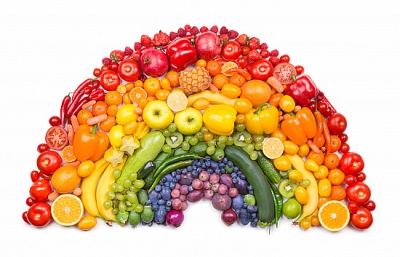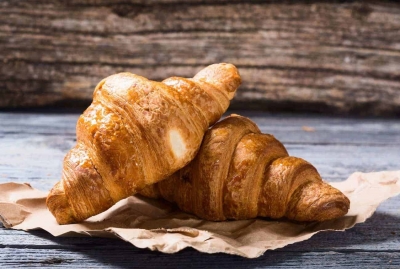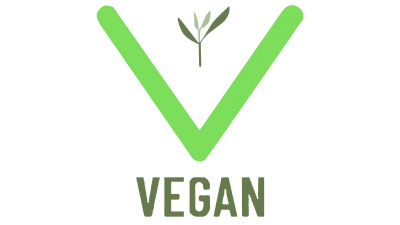
Every time you scrolled through a food blog or some colourful food posts on Instagram or Facebook, I'm sure you came across the phrase 'Eat the rainbow', or bloggers advising you to try "The Colour Diet', or "The 7-day Rainbow Diet' or various quotes like 'add a splash of colour to your meal'. I am sure you've wondered whether it's another fad diet, worth trying.
To put it simply, adding colour to your plate is adding fruits and vegetables to your daily diet. In today's world, going vegetarian is in vogue. The Rainbow Diet is a vegetarian diet - with a difference, i.e., apart from the regular nutrient content the added splash is in the colour!
Adding colour to your plate is much more than making your plate look pretty. Certain fruits and veggies contain particular bioactive compounds called phytonutrients. They are naturally occurring compounds that provide pigment to the foods, which besides making your plate look colourful, are beneficial also in reducing the risk of various diseases and infections.
That being said, research has also proven that adding colourful fruits and vegetables have a number of antioxidant and anti inflammatory effects which provide your body with an array of vitamin and minerals that are extremely beneficial to one's health.
So how DO we eat the rainbow?
|
COLOUR
|
BENEFITS
|
FOOD
|
|
Red foods: Heart-friendly foods
|
Lycopene pigment present aids in promoting a healthy heart, but also boosts immunity, reduces the risk of cancer and arthritis by preventing inflammation.
|
Tomalo, Beetroot, Watermelon, Pomegranate, Cherries, Red Bell Peppers, Apples, Strawberries
|
|
Yellow/Orange foods: Antioxidant-rich foods
|
Carotenoids present in these antioxidant-rich foods reduce inflammation, boost the immune system and reduce the risk of infection. Also improve eyesight and are great for the skin.
|
Limes, Oranges, Lemons, Grapefruits, Amla, Guava, Carrots, Pumpkin, Mangoes, Bananas, Pineapple, Papaya
|
|
Green foods: Detox foods
|
Chlorophyll pigment present boosts the immune system, improves bone health, helps detoxify the body.
|
Spinach, Broccoli, Fenugreek, Cucumber, Bottle Gourd, Green Apple, Kale, Avocado, Green Beans, Peas, Cluster Beans
|
|
White/Brown
|
Allicin present in the onion family has cardio-protective and anti-tumour properties
|
Onions, Cauliflower, Garlic, Leeks. Parsnips, Radish, Mushrooms
|
|
Blue/Purple foods: Brain foods
|
Anthocyanin pigment present aids in reducing inflammation, improves cognition, boosts mood, reduces risk of Alzheimer, protects from cellular damage.
|
Bluebemes, Blackbemes, Black Grapes, Raisins. Eggplant, Plums Figs, Prunes, Purple Cabbage
|
Easy ways to make your meal more colourful
Keep it colourful: The next time you go grocery shopping, take a good look at your cart. Are you missing a colour? Always make sure your cart looks colourful.
Add vegetables to your smoothie/smoothies bowl: Adding veggies to your smoothie bowl/smoothies is the simplest and most delicious way to add colour to your meal. Plus, it's always fun to try out new recipes! For example, beetroot or spinach adds a nice hue to your smoothie/smoothie bowls.
Make a technicolour salad: One of the easiest meal preps is salad with an array of colours. The more the colours, the more the nutrients. Plus, they're low in calories, and are loaded with fibre, so they really satisfy. Also make your salads more colourful.
Add fruits to your cereal/ porridge/oats: Spice up your breakfast colourful and appetizing by simply adding a few colourful fruits to your bowl. This not only makes your breakfast healthier and full of anti oxidants, but also much more colourful and "Instgrammable"!
Make your pastas colourful: Apart from the usual veggies, that you add to your pastas, try sprucing up your pasta with a pureed vegetable, e.g., add spinach, beetroot, carrot.
Lastly, remember the saying, "There's always a pot of gold at the end of every rainbow". Although there might not be a literal pot of gold at the end of this 'metaphorical' rainbow, you will surely receive the wealth of good health and happiness.
Credit : Sharleen Zacharia (The Teenager Today)
Picture Credit : Google


